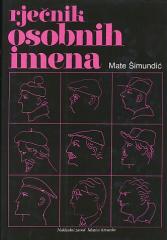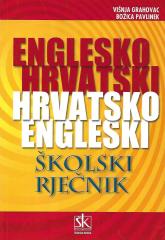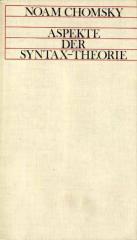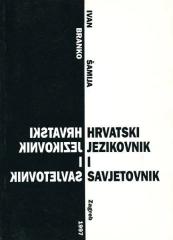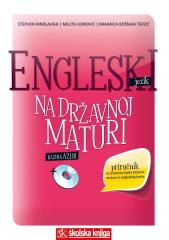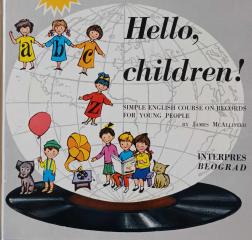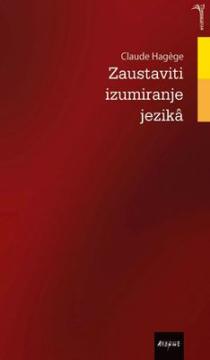
Zaustaviti izumiranje jezikâ
Der Autor stützt seine Forschung auf die Erkenntnis, dass – wenn sich nichts ändert – in etwa hundert Jahren von den heute etwa 5.000 lebenden Sprachen die Hälfte aussterben wird. Besonders beunruhigt ihn die Tatsache, dass diese Katastrophe in völliger G
Hagège warnt vor der dringenden Notwendigkeit, etwas zu tun, damit die menschlichen Kulturen nicht mehr im Abgrund der Vergessenheit verschwinden. Gleichzeitig ermöglicht ihm seine breite Sprachkenntnis, bis ins kleinste Detail aus der Vergangenheit des Lateinischen, Sanskrit, Arabischen, Sumerischen, Gotischen und vieler anderer Sprachen vorzudringen.
Im ersten Teil des Buches beschäftigt sich der Autor mit der engen Verbindung zwischen Sprachen und den Grundprinzipien des Lebens, die das Universum regieren. Da Sprachen Leben spenden und gleichzeitig die Vergangenheit bewahren, können wir sie gewissermaßen als lebende Arten beobachten. Um zu verstehen, was das Verschwinden einer Sprache eigentlich bedeutet und wie sehr sie sich vom Verschwinden anderer Arten unterscheidet, genügt es, ihr wesentliches Merkmal zu bestimmen: die Sprache. Sprache ist kurzlebig und unberechenbar, aber die Sprache stirbt nicht vollständig aus, wenn keine Sprache vorhanden ist.
Im zweiten Teil des Buches geht es darum, was unter dem Aussterben einer Sprache zu verstehen ist, was für ein Prozess es ist, was seine Ursachen sind und was es für unsere Spezies bedeutet und schließlich, welche Maßnahmen wir ergreifen können, um das Aussterben einer Sprache zu verhindern . Der Autor erläutert drei Profile des Verschwindens von Sprachen: Transformation (die Entstehung neuer Sprachen, beispielsweise aus dem Lateinischen), Substitution (der Prozess der Verschmelzung mit einer anderen vorherrschenden Sprache) und Aussterben (der Tod der letzten ursprünglichen Sprecher), wobei das Aussterben der Fall ist aktuellstes Phänomen heute. Die Gründe für das Verschwinden von Sprachen sind vielfältig, und der häufigste politische Grund ist „Linguizid“ durch den Staat (sprachliche Hegemonie, die schwächere Sprachen unterdrückt), und der wirtschaftliche Grund ist der Druck eines mächtigeren Wirtschaftssystems, der dazu führt Das Prestige der peripheren Sprachen nimmt ab und es besteht die Notwendigkeit, die Sprache des vorherrschenden Systems zu kennen. Wie einst Latein ist Englisch heute dabei, viele Sprachen auszurotten. Dank moderner Technologien und Kommunikationsmittel übersteigt die Stärke und Geschwindigkeit, mit der sich Englisch heute in der Welt verbreitet, die Stärke und Geschwindigkeit, die es in der Vergangenheit einigen Sprachen, beispielsweise Latein, ermöglichte, eine große Anzahl von Sprachen vollständig auszulöschen, bei weitem.
Dem Autor zufolge gibt es vier grundlegende Schritte, die Sprachen helfen können: zweisprachige Bildungsprogramme, die Erklärung der Sprache zum Beamten, die Einbeziehung der Sprecher selbst in die Wiederbelebung ihrer eigenen Sprache und die Arbeit von Linguisten (sowohl bei der Beschreibung der Sachlage als auch bei der Beschreibung der Sachlage). Schaffung eines positiven Bewusstseins für die Sprache).
Im Kapitel „Sprachen und Auferstehung“ geht der Autor vor allem auf die Auferstehung des Hebräischen ein, ein beeindruckendes Phänomen, das in seiner Bedeutung und seinem Vollendungsgrad bisher einzigartig ist. Obwohl es mehrere Jahrhunderte lang keine „Sprache“ gab, ist es heute die Sprache eines ganzen Landes. Anschließend erwähnt er mehrere andere interessante Fälle, darunter die Wiederauferstehung der kroatischen Sprache. Mit der politischen Förderung der kroatischen Sprache nach der Erlangung der Unabhängigkeit bereichern die Kroaten Europa heute um eine weitere Sprache, was angesichts des Ausmaßes der Sprachkatastrophe von unbeschreiblicher Bedeutung ist.
Angeboten wird ein Exemplar
